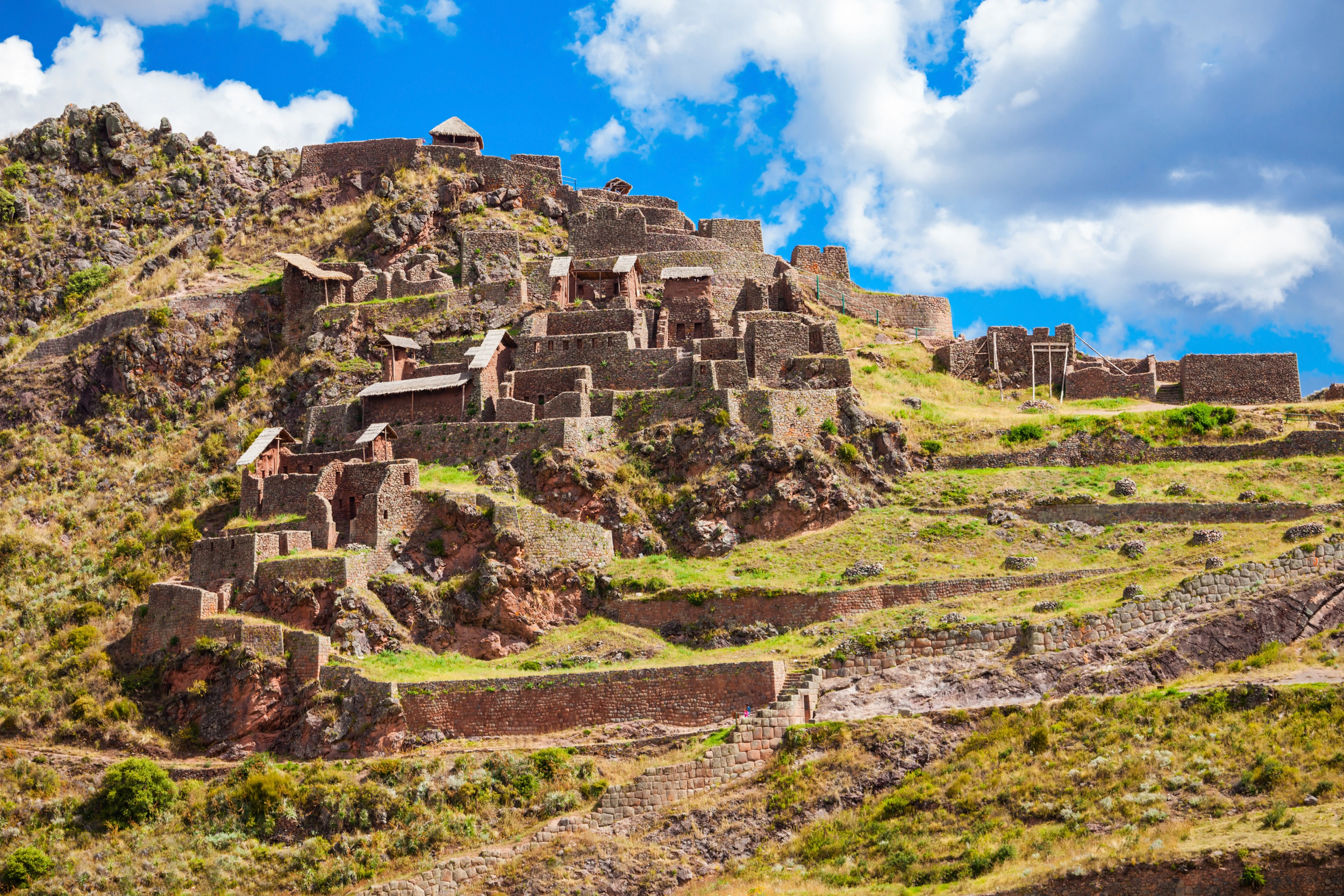
Pisaq

Pisac is an ancient Inca archaeological site located in the Sacred Valley of the Incas, about 33 kilometers from Cusco, Peru. Built in the 15th century, the site is dramatically set on a mountain ridge overlooking the modern town of Pisac and the Urubamba River. It is believed to have served multiple purposes: as a military stronghold, a religious center, and a hub for agricultural innovation. The site is renowned for its extensive and well-preserved agricultural terraces that descend steeply along the mountain slopes, showcasing the Inca’s advanced engineering and farming techniques. These terraces not only maximized arable land in the rugged terrain but also helped prevent erosion.
In addition to the terraces, Pisac features impressive examples of Inca stonework, including ceremonial baths, temples, and living quarters built with finely cut stones that fit together without mortar. The religious center of the site includes the Temple of the Sun and the Intihuatana, a carved ritual stone believed to have astronomical functions. The strategic placement of Pisac also suggests it played a role in guarding the southern entrance to the Sacred Valley. With its blend of breathtaking scenery, cultural significance, and architectural ingenuity, Pisac offers a vivid glimpse into the life and sophistication of the Inca civilization.
Logistics:
Hiking to the Pisac ruins typically begins in the modern town of Pisac, located at the base of the mountain. From there, hikers can follow a well-marked but steep trail that winds up through terraced hillsides to the archaeological site. The hike takes about 1.5 to 2 hours depending on pace and fitness level. It’s recommended to start early in the day to avoid the midday sun and to bring water, sunscreen, and sturdy shoes. Some visitors opt to take a taxi to the top and hike down, which is easier and still allows for scenic views. Entrance to the site requires a tourist ticket, which can be purchased in Cusco or at the entrance.


